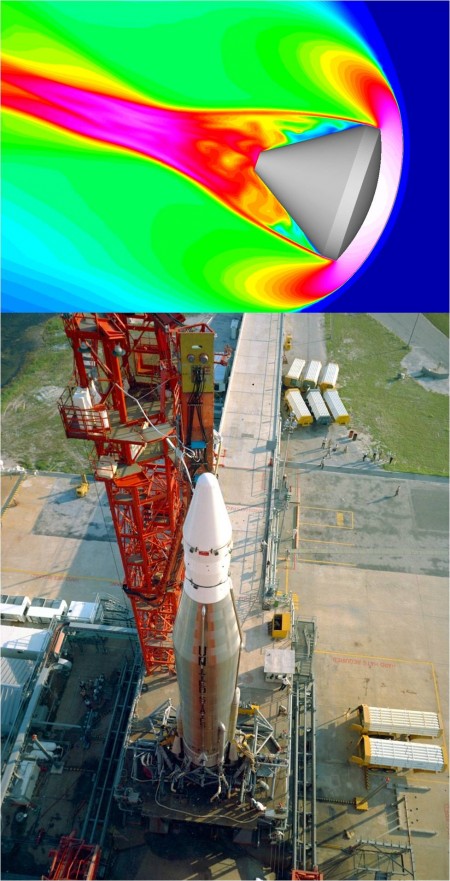Forty-nine years ago this month, the first of two NASA Project FIRE flights to acquire aerodynamic heating flight data on a subscale Apollo reentry vehicle was successfully flown. The mission provided vital aerothermodynamics data needed by the Apollo Program to evaluate heatshield materials and communications blackout phemomena for superorbital reentry of the Apollo Command Module.
The rapid advancement of manned space exploration in the 1960’s accentuated the need for defining the reentry heating environment at velocities exceeding the earth’s escape velocity. The primary objective of Project FIRE (Flight Investigation of the Reentry Environment) was to obtain convective and radiative aerodynamic heating data for a subscale reentry vehicle representative of the Apollo Command Module.
The Project FIRE concept involved the use of an Atlas D launch vehicle to loft the FIRE spacecraft into a suborbital flight path. During the post-apogee leg of this trajectory, an Antares II solid-fuel upper stage fired and drove the payload to maximum velocity. Instruments within the FIRE spacecraft measured and radioed data to the ground all the way to splash. There was no attempt to recover the payload.
The heating pulse for a FIRE reentry lasted about 40 seconds. However, a single calorimeter could not survive the entire entry heating period. As a solution to this problem, NASA engineers developed an innovative, but complex, 6-layer heat shield to measure the convective and radiative heat flux rates throughout the heating pulse.
The first, third and fifth layers of the FIRE forebody heat shield were made from beryllium and instrumented with thermocouples to obtain reentry temperature-time histories. The second, fourth and sixth layers consisted of phenolic asbestos thermal protection material. The first two of these latter layers were jettisoned at appropriate times during the entry heating pulse to expose a fresh calorimeter to a clean environment.
Radiometers measured total radiant heat flux through quartz windows mounted in each forebody layer. One each was located in the stagnation region and near corner of the front face of the base heat shield. The short life of these radiometer quartz windows limited acquisition of radiant heat flux data to three brief periods during the heating pulse.
On Tuesday, 14 April 1964, an Atlas D launch vehicle carrying the FIRE 1 spacecraft lifted-off from Cape Canaveral’s LC-12 at 21:42:25 UTC. A ballistic trajectory was flown down the Eastern Test Range (ETR). The maximum velocity and flight path angle achieved during the mission was 37,790 feet per second and -14.5 degrees, respectively. Payload impact occurred in the South Atlantic Ocean near Ascension Island. Total flight time from launch to splash was on the order of 32 minutes.
From a trajectory and sequence-of-events standpoint, FIRE 1 was a complete susccess, since the vehicle performance and timed events were well within prescribed limits. However, a faulty telemetry antenna and unexpectedly large coning motions of the FIRE spacecraft complicated data acquisition and interpretation.
Maximum flight-measured heating rate on the FIRE spacecraft forebody was 1,003 BTU’s per square foot per second, which agreed well with ground test and theory. Incredibly, the spacecraft exterior reached an estimated temperature of 20,000 degrees Fahrenheit; hotter than the outer surface of the Sun.


